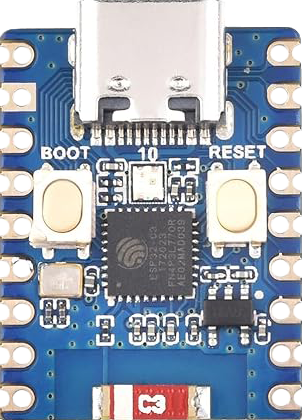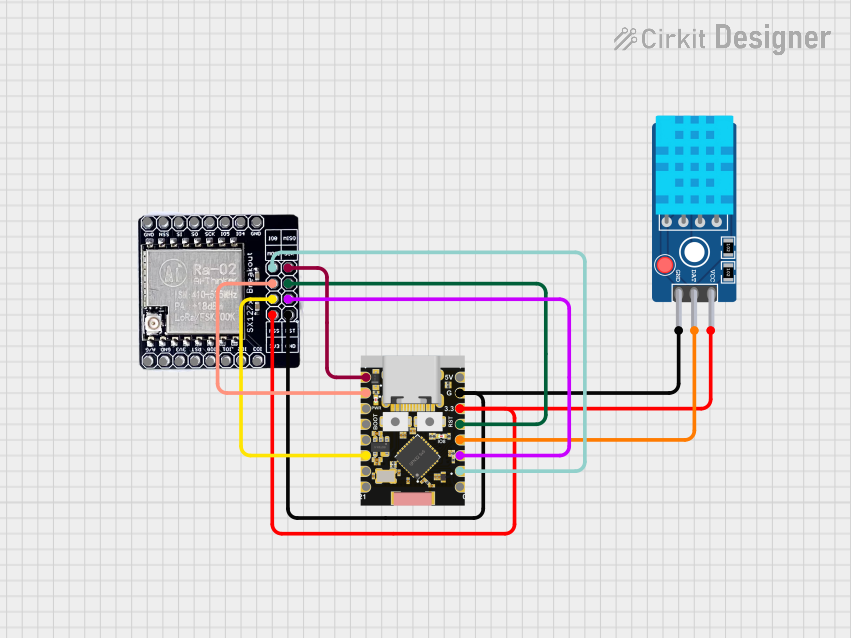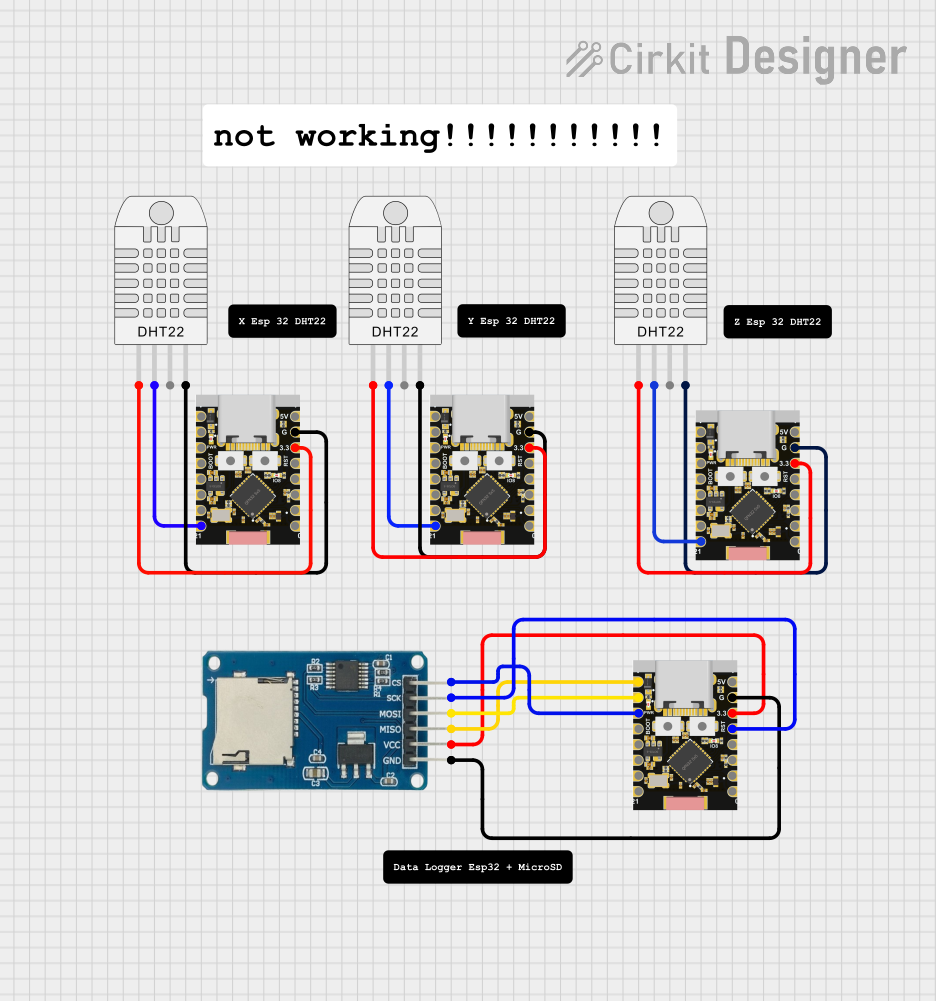
How to Use ESP32-C3 Mini: Examples, Pinouts, and Specs

 Design with ESP32-C3 Mini in Cirkit Designer
Design with ESP32-C3 Mini in Cirkit DesignerIntroduction
The ESP32-C3 Mini is a highly integrated, low-power system on a chip (SoC) that incorporates Wi-Fi and Bluetooth capabilities, making it an ideal choice for Internet of Things (IoT) projects and embedded systems. This compact development board is based on the ESP32-C3 chip and is designed for a wide range of applications, from smart home devices to industrial automation.
Explore Projects Built with ESP32-C3 Mini

 Open Project in Cirkit Designer
Open Project in Cirkit Designer
 Open Project in Cirkit Designer
Open Project in Cirkit Designer
 Open Project in Cirkit Designer
Open Project in Cirkit Designer
 Open Project in Cirkit Designer
Open Project in Cirkit DesignerExplore Projects Built with ESP32-C3 Mini

 Open Project in Cirkit Designer
Open Project in Cirkit Designer
 Open Project in Cirkit Designer
Open Project in Cirkit Designer
 Open Project in Cirkit Designer
Open Project in Cirkit Designer
 Open Project in Cirkit Designer
Open Project in Cirkit DesignerCommon Applications and Use Cases
- Smart home devices (e.g., lighting, security systems)
- Wireless sensors and actuators
- IoT nodes and gateways
- Wearable electronics
- Low-power embedded systems
Technical Specifications
Key Technical Details
- CPU: 32-bit RISC-V single-core processor
- Operating Voltage: 3.3V
- Input Voltage (recommended): 5V via USB or VIN pin
- Digital I/O Pins: 22
- Analog Input Pins: 6 (ADC channels)
- Wi-Fi: 802.11 b/g/n (2.4 GHz)
- Bluetooth: BLE 5.0
- Flash Memory: 4 MB
- SRAM: 400 KB
- Clock Frequency: Up to 160 MHz
- Interfaces: UART, SPI, I2C, PWM, I2S, RMT
- Temperature Range: -40°C to 125°C
Pin Configuration and Descriptions
| Pin Number | Name | Functionality |
|---|---|---|
| 1 | 3V3 | Power supply (3.3V) |
| 2 | GND | Ground |
| 3 | EN | Chip enable (active high) |
| ... | ... | ... |
| n | IOxx | General purpose IO pins |
Note: This is a simplified representation. Refer to the ESP32-C3 Mini datasheet for the complete pinout and detailed descriptions.
Usage Instructions
How to Use the Component in a Circuit
- Powering the Module: Connect a 5V power supply to the VIN pin and GND, or use the USB port if available.
- Programming the Module: Use the onboard USB-to-UART bridge to upload firmware.
- Connecting to Wi-Fi: Utilize the provided libraries to connect to a Wi-Fi network.
- Using GPIO Pins: Configure the pins as input or output according to your application needs.
Important Considerations and Best Practices
- Ensure that the power supply is stable and within the recommended voltage range.
- Use a logic level converter if interfacing with 5V logic devices.
- Avoid exposing the module to temperatures outside the specified range.
- Follow proper ESD precautions when handling the module to prevent damage.
Troubleshooting and FAQs
Common Issues Users Might Face
- Module Does Not Power On: Check the power supply and connections.
- Cannot Connect to Wi-Fi: Verify the network credentials and signal strength.
- Intermittent Operation: Ensure there is no overheating and that the power supply is consistent.
Solutions and Tips for Troubleshooting
- Double-check wiring and solder joints for any loose connections.
- Use serial output to debug and monitor the status of the module.
- Update to the latest firmware to resolve known issues.
FAQs
Q: Can the ESP32-C3 Mini be used with a battery? A: Yes, it can be powered by a battery, but ensure voltage regulation if the battery exceeds the recommended voltage.
Q: Is the ESP32-C3 Mini compatible with the Arduino IDE? A: Yes, it is compatible with the Arduino IDE. You will need to install the ESP32 board package.
Q: How many GPIO pins support PWM? A: All digital GPIO pins on the ESP32-C3 Mini support PWM.
Example Code for Arduino UNO
#include <WiFi.h>
// Replace with your network credentials
const char* ssid = "your_SSID";
const char* password = "your_PASSWORD";
void setup() {
Serial.begin(115200);
// Connect to Wi-Fi
WiFi.begin(ssid, password);
while (WiFi.status() != WL_CONNECTED) {
delay(500);
Serial.println("Connecting to WiFi...");
}
Serial.println("Connected to WiFi");
}
void loop() {
// Your code here
}
Note: This example demonstrates how to connect the ESP32-C3 Mini to a Wi-Fi network. Make sure to replace your_SSID and your_PASSWORD with your actual Wi-Fi credentials.
Remember to wrap code comments to limit line length to 80 characters, as shown in the example above. This ensures readability and maintains a clean, professional appearance in the documentation.